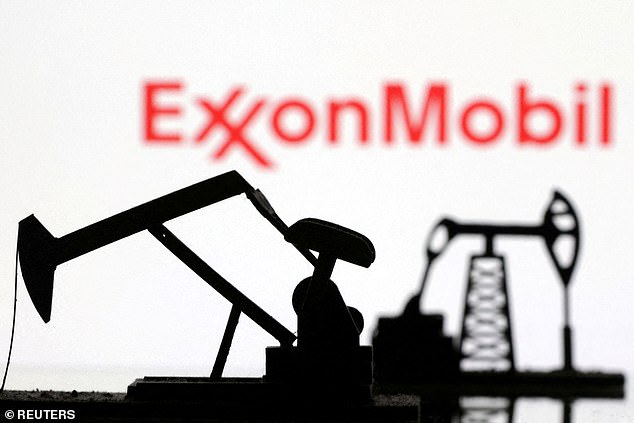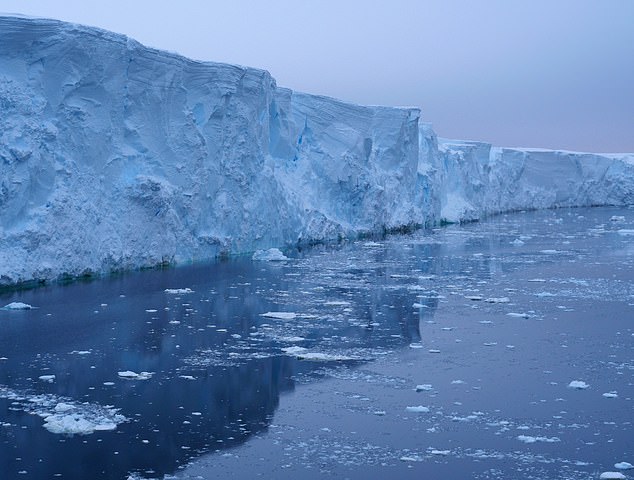Oil and gas giants to cash in on climate crisis they helped cause: Melting ice exposes new petroleum reservoirs in the Arctic worth $7TRILLION – in what is being dubbed a ‘modern day gold rush’
As new land is exposed by melting ice due to climate change, Arctic countries and companies are poised to make trillions of dollars from newly exposed land and sea.
A new article published in the magazine Science has warned that Arctic smelting areas have become ‘front lines for resource extraction’, describing it as a ‘modern gold rush’.
The US Geological Survey (USGS) estimates that there is up to 90 billion barrels of oil undiscovered in the Arctic, with up to 84 percent of it in offshore areas.
With Brent Crude price at $80,861 at the time of writing, as a rough estimate the value of the oil could be as high as $7 trillion.
Melting glaciers in Arctic Greenland show how climate change is transforming the Arctic

Oil giant Exxon Mobil has described the area as ‘the most promising and least explored regions for oil’.
There are also 1,669 trillion cubic feet of natural gas and 44 billion barrels of liquefied natural gas, the USGS estimates.
Oil giant Exxon Mobil has described the area as ‘the most promising and least explored regions for oil’.
Environmental group Greenpeace has said it is a “bitter irony” that melting Arctic ice is seen as a business opportunity rather than the cost of climate change.
Norway, Canada, Denmark, the US and Russia have all laid claim to the ‘extended continental shelf’ under the United Nations Convention on the Law of the Sea (UNCLOS).
About 40 percent of the Arctic is land, while another third consists of vast continental shelves under less than 500 meters of water.
The USGS said: ‘The vast Arctic continental shelf may geographically represent the largest unexplored area for the petroleum remaining on Earth.’
The Arctic countries (the US, Canada, Greenland, Norway, Iceland and Canada) have the rights to drill in their territories, and companies like Shell and BP pay to drill in those areas.
Russia’s Gazprom has already started drilling in the Arctic regions.
Environmentalists have taken the Norwegian government to the European Court of Human Rights (ECtHR) for allowing oil exploration in the Arctic.
The USGS estimates that 70 percent of undiscovered oil reserves are in the Alaska Arctic, the Amerasia Basin, the East Greenland Rift Basins, the East Barents Basins, and West Greenland-East Canada.

Summer Arctic sea ice is shrinking 12.2% every decade (Getty)
According to NASA statistics, Arctic summer sea ice is shrinking by 12.2 percent every decade due to warmer temperatures caused by human-induced climate change.
At the end of 2020, sea ice cover shrank to 3.74 square kilometers as a heat wave raged in Siberia.
Temperatures in the Arctic were 8 degrees Celsius warmer than average last year, and researchers predict that there will be no more summer sea ice by 2050.
The US government estimates that the world uses 30 billion barrels of oil annually.
Researchers have warned that the melting ice could not only cause sea levels to rise, but that new drilling could devastate species such as salmon, with companies drilling in areas where they would breed.
Lead author Jonathan Moore of Simon Fraser University says in the paper: “Current policies are lagging behind the rapid pace of change,” and calls for new laws around the extraction of oil and minerals from areas exposed to melting ice.
He writes, “As climate change warms the Earth, the melting cryosphere is creating emergent ecosystems that have future habitat value but are also the front line for resource extraction.”
‘As climate warming continues, retreating glaciers are exposing new areas that have potential future value as critical habitats for culturally important species such as Pacific salmon.
‘However, the retreat of the glaciers is also contributing to a modern gold rush, as mining companies around the world look to these areas in search of newly exposed mineral deposits.’
